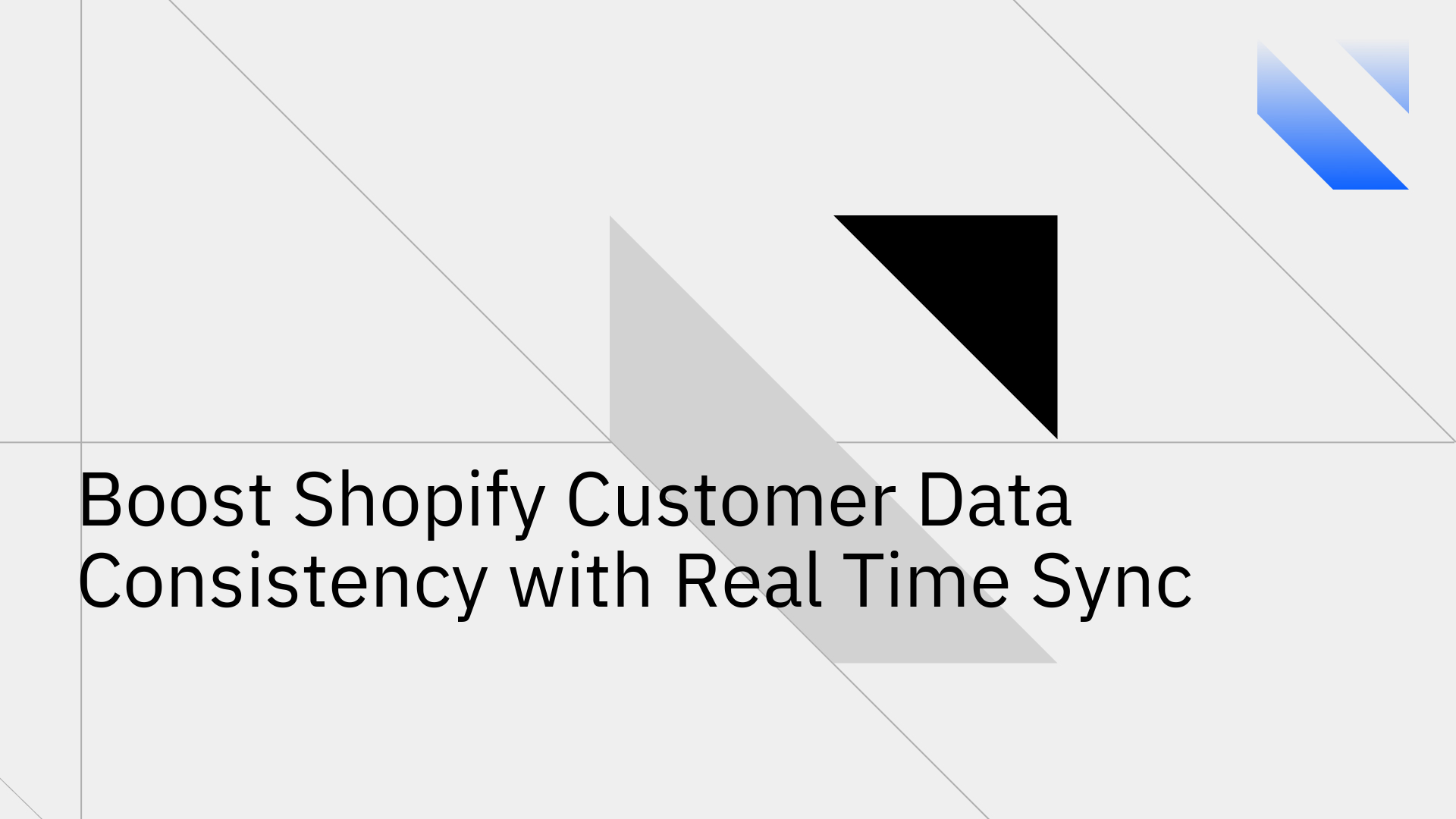
For a thriving Shopify store, your customer data is your most valuable asset. It fuels everything from personalized marketing campaigns to excellent customer service. But what happens when that data is inconsistent? When a customer's shipping address in Shopify doesn't match the one in your fulfillment software, or their contact details in your CRM are outdated, chaos ensues.
This problem, known as data inconsistency, leads to flawed marketing, poor service, and operational bottlenecks. The essential solution to maintain Shopify customer data consistency is real-time data synchronization.
Customer information isn't static; it naturally becomes outdated over time in a process called "data decay." Contacts change jobs, move to new addresses, or update their email, rendering your records useless. In fact, B2B data can decay at a staggering rate of 22.5% annually [1]. When you're running a business on outdated information, the costs add up quickly. Poor data quality costs the average organization an estimated $15 million per year in losses [2].
This financial drain stems from several operational consequences:
Real-time sync is the instantaneous, automated process of updating data across all connected systems the moment a change occurs. Unlike traditional batch updates—which might run once a day or once an hour—a real-time approach eliminates data lags. With batch updates, your teams are always at risk of working with outdated information in the time between sync cycles.
The core benefits of a real-time approach for your Shopify store are clear:
Achieving this level of harmony requires a platform with robust, real-time sync features engineered to guarantee data consistency at scale.
Stacksync is a premier data sync and workflow automation platform designed to provide perfect data consistency with reliability and scale. We solve the data consistency problem by providing powerful, purpose-built features that manual processes and basic connectors simply can't match.
Stacksync’s bidirectional, or two-way, sync ensures that an update in Shopify is instantly reflected in your CRM, ERP, and other business-critical tools—and vice-versa. This is not just two one-way syncs running in parallel; it's a true bi-directional engine that maintains a single source of truth. This capability is crucial for complex operations, such as keeping inventory and order data perfectly aligned between Shopify and an ERP like NetSuite. With sync speeds measured in milliseconds, you can run mission-critical workflows without delay, unlocking new levels of efficiency.
One of the biggest fears with data automation is the "silent sync failure," where an error occurs without your knowledge, slowly corrupting your data. Stacksync was built to prevent this. Our advanced Issue Management dashboard gives you real-time alerts and complete visibility into the health of your syncs. If an error ever occurs, you can investigate the cause and retry or revert the failed record with a single click, ensuring your data integrity is never compromised.
As your Shopify store grows, your data volume explodes. Stacksync is engineered to handle this growth from day one, capable of syncing millions of records without requiring you to manage any complex infrastructure. Our platform includes a "Smart API Rate Limits" feature, which automatically adjusts to the API quotas of connected systems like Shopify. This prevents your syncs from failing due to API call limits—a common and frustrating headache for developers allowing your business to scale without interruption.
Getting started with Stacksync is straightforward, allowing you to achieve flawless data consistency in minutes, not months.
Ready to eliminate data inconsistencies and unlock the full power of your customer data? Explore our Shopify two-way sync integration and see how easy it is to get started.